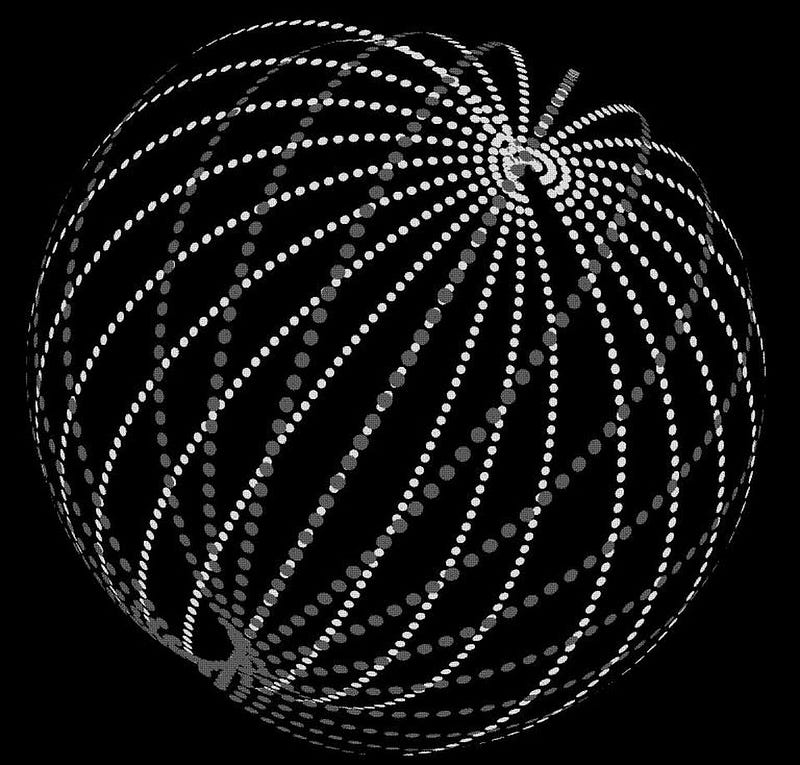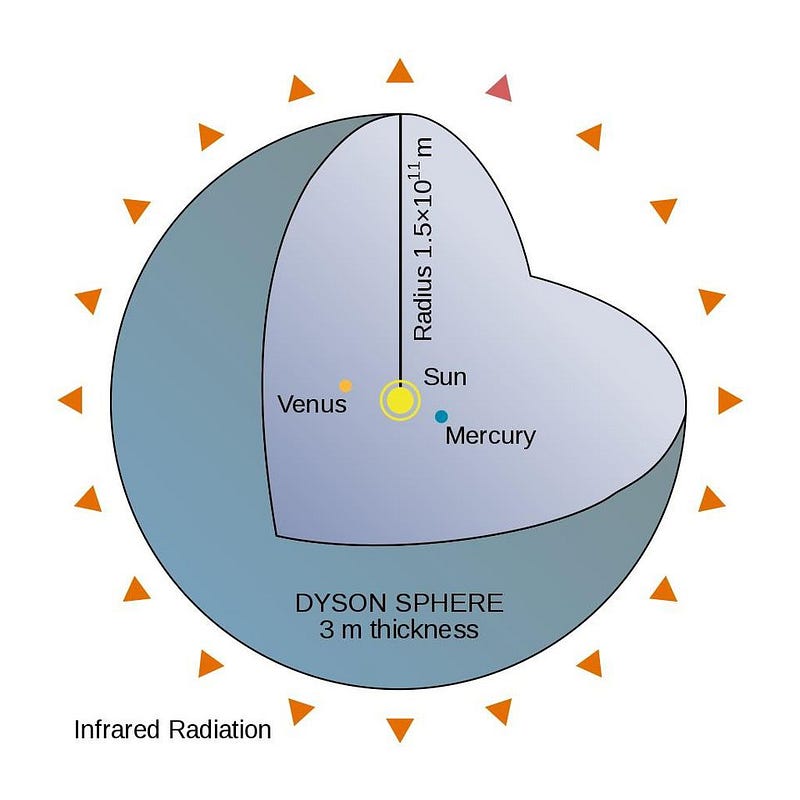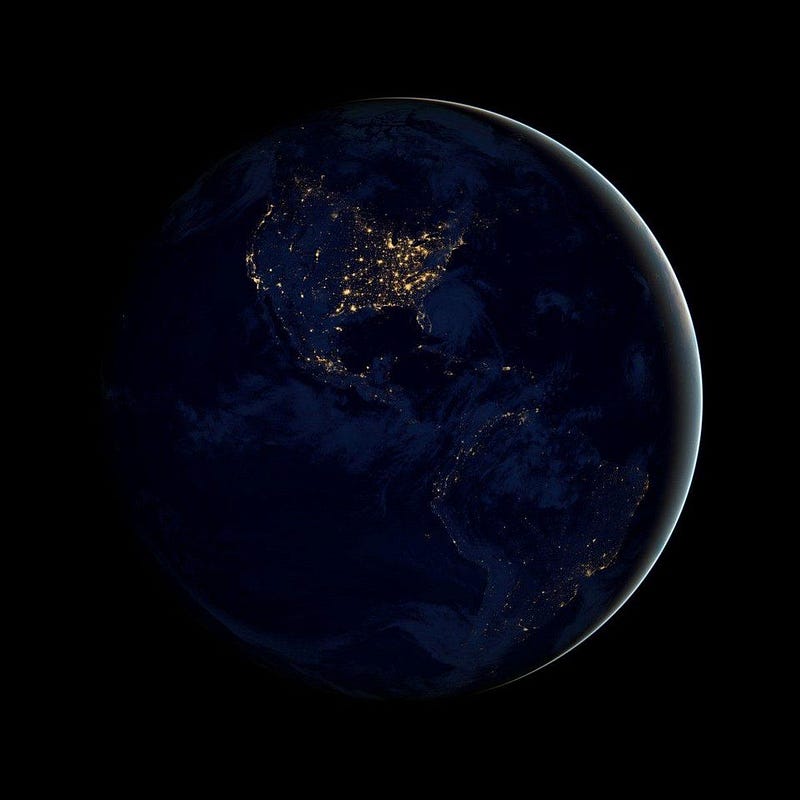Dyson Spheres, The Ultimate Alien Megastructures, Are Missing From The Galaxy

Humanity has mapped the Milky Way better than ever with ESA’s Gaia. But 1.7 billion stars later, there are still no Dyson spheres.
Perhaps the greatest ‘holy grail’ in all of astronomy is the search for life, and particularly intelligent life, beyond Earth. Given that life arose so plentifully and easily here on our home planet, and that the ingredients for life are everywhere we look throughout the Universe, it seems like a foregone conclusion that we wouldn’t be alone. The Milky Way, all on its own, has approximately 400 billion stars, each with its own unique history and chances for life to have arisen. Despite how technologically advanced humans have become, SETI searches have all come up empty, perhaps implying that technologically advanced civilizations aren’t communicating in ways we would have thought. But an advanced-enough planet might have built a sphere around their Sun — a Dyson sphere — to harness 100% of its energy. Incredibly, we now have the technology to detect them. If, that is, they exist.

Here on Earth, the amount of energy available to us is determined by the amount of sunlight striking our planet’s surface. At Earth’s distance from the Sun, that equates to approximately 1300 watts per square meter, which drops to around 1000 if you force the light to go through the atmosphere. If we were to cover the space above Earth’s atmosphere with solar panels, we could collect around 166 million gigawatts of power, continuously, over the entire Earth. This is a tremendous amount of power: about a second’s worth of this could power humanity’s uses on Earth for an entire year. But it’s only a tiny fraction of the energy produced by the Sun. If we needed more, there are ways to do it.

For example, we could build a swarm in space to collect even more of the Sun’s energy. Imagine a large series of spaceships moving in a ring, or a series of rings, with large collecting areas. That energy could be used for whatever purposes we desired: it could be reflected or beamed back to Earth, it could be used in-situ to build a network surrounding the Solar System, or for interstellar communications purposes. This is where the idea of alien megastructures — once theorized to be the explanation for the dimming of Tabby’s star — originally arose.

However, arguably the most ambitious megastructure would be what’s known as a Dyson sphere: building a shell around a star that harnesses all of its energy. We could do this simply by cannibalizing a small planet like Mercury, mining it for its iron and oxygen, creating a reflective hematite surface. If an alien civilization did this, it would completely obscure the star, leaving it virtually undetectable.

At least, it would be undetectable to visible-light telescopes, since such a sphere would completely block the star’s light. But even a highly reflective surface has to absorb some of the energy. And if you absorb energy over time, you have to re-radiate it away in order to maintain a stable temperature. That means this energy has to go out into the Universe, even if there’s no visible light. Just as the Earth, at night, radiates energy away in the infrared, so would a Dyson sphere.

The European Space Agency has just released a huge suite of datafrom the most powerful satellite ever to map and survey the stars in the Milky Way: Gaia. They’ve recorded information about a whopping 1.7 billion stars in our galaxy, allowing us to create the most sophisticated 3D map of the stars in our galaxy ever. It isn’t all the stars, but it’s orders of magnitude more than were ever recorded previously, including in the first Gaia data release.
One of the great things that Gaia was able to measure was the color and magnitude of a great many stars, from faint red dwarfs (and even nearby brown dwarfs) to stellar corpses like white dwarfs all the way up to main sequence stars and the giants and supergiants that are among the most luminous of all. But Gaia doesn’t just observe visible light, but near-infrared as well, meaning that objects invisible to human eyes will be revealed. This includes ultra-cool stars of both the giant and dwarf variety. And, if they existed, it could also include Dyson spheres, assuming they had specific temperature/luminosity profiles. Here’s the classic “color-magnitude” diagram on the left, and what Gaia has observed (below) on the right.

The big, bold line that cuts from the lower-left to the upper-right is the main sequence, where stars that fuse hydrogen into helium live. Veering off to the upper-right are stars that are in the giant or supergiant phase: burning heavier elements and expanding to a much larger size. Even though they are more luminous, they’re lower in temperature, because their energy has diffused over such a large area (a photosphere) that emits energy.
With a Dyson sphere, you’re basically doing that, but for a regular or even a low-mass star. You’re creating a much larger surface area for the star’s energy to escape from, and hence it will radiate at a much lower temperature, while still outputting the same total energy. The infrared signature is how we commonly think of detecting Dyson spheres, but the Gaia satellite holds another possibility, as pointed out by a team led by Erik Zackrisson: a mismatched luminosity-based distance with its parallax distance.

When you draw an inference about distance based on the light you observe, and then make a measurement in a completely different fashion (via geometry), those two figures should line up. The fact that Gaia has seen a few misalignments could indicate a number of possibilities, and alien megastructures certainly are one of them. It’s only human nature for our minds to go straight towards the most fantastic explanation, especially when the discovery of our lifetime would await us down that path. But the most reasonable and mundane is that these interesting objects simply aren’t single stars, but have unseen binary companions: a very common occurrence in this Universe. The fact that there is no excess infrared radiation, a requirement of Dyson-type structures, points away from the alien megastructure hypothesis.

The combined suite of observatories, including the Gaia spacecraft, have the technology that is in principle capable of detecting Dyson spheres that are a few thousand light years away, assuming they’re at the same distance from a Sun-like star that Earth is from ours. A red dwarf star would be visible to Gaia’s eyes with a smaller Dyson sphere out to around a hundred light years, but a giant or supergiant star would be visible from almost anywhere in the galaxy. With 1.7 billion objects surveyed in the latest data release, Gaia could reveal Dyson spheres that are under construction. By correlating with other infrared observatories, it could even potentially find completed Dyson spheres that were radiating enough energy. At the time of this publication, though, the full suite of data we have indicates exactly zero Dyson spheres in the Milky Way.

But this doesn’t necessarily mean there aren’t any; it simply means that if they’re out there, we haven’t seen them yet. Dyson spheres could exist at greater distances, around smaller, lower-energy stars, or with larger diameters than Gaia is capable of detecting. Infrared observatories like WISE have placed major constraints on them, as well, and next-generation observatories that could potentially detect the waste-heat signature from such an object, like ESA’s Euclid or NASA’s WFIRST, will have the capability to search for these Dyson spheres out even farther.

Given the full suite of observatories that have surveyed the sky, we can say, relatively safely, that with more stars measured more accurately than ever before, we have still found zero Dyson spheres at the present time. There may yet be intelligent aliens out there, building vast trans-planetary empires to collect and utilize as much energy as possible, but the evidence for them is nil thus far. Until such extraordinary evidence arrives, there’s only one reasonable conclusion: our galaxy, as best as we can tell, appears to be devoid of these wished-for alien megastructures.
Note: This story has been updated from its original form to include a correction that the 1.7 billion stars measured/released by Gaia have not yet been fully analyzed for possible correlations with mid-IR or far-IR data that could yet reveal Dyson spheres. Ethan Siegel regrets any misunderstandings that this may have caused.
Ethan Siegel is the author of Beyond the Galaxy and Treknology. You can pre-order his third book, currently in development: the Encyclopaedia Cosmologica.




